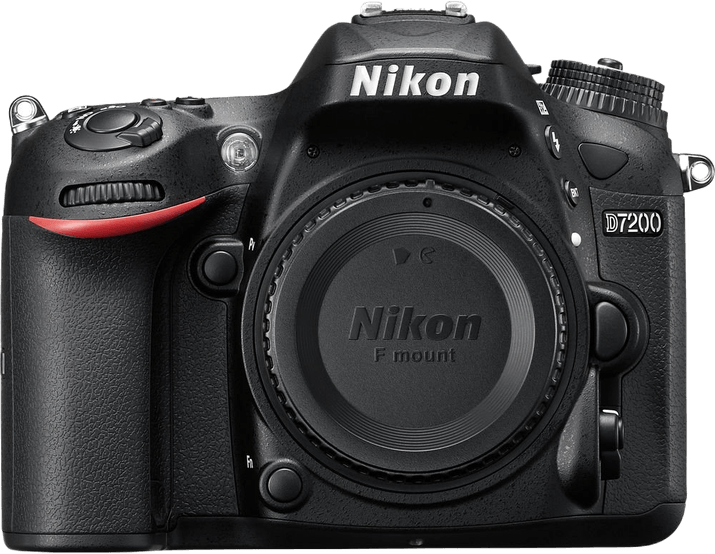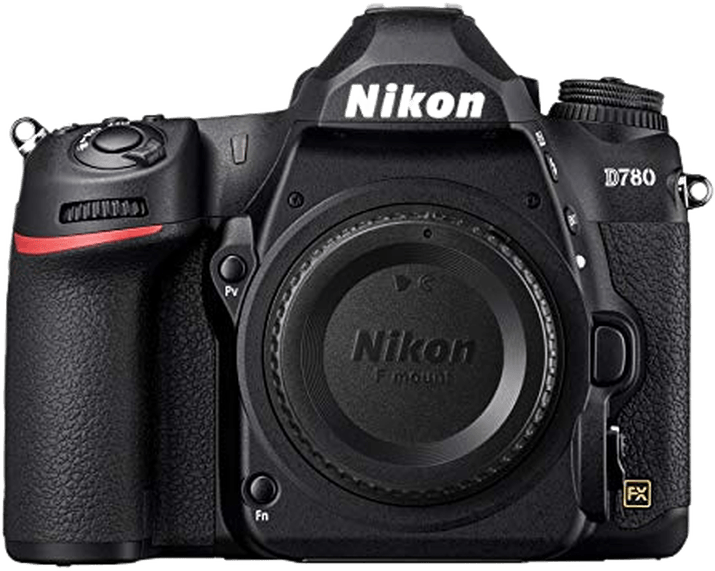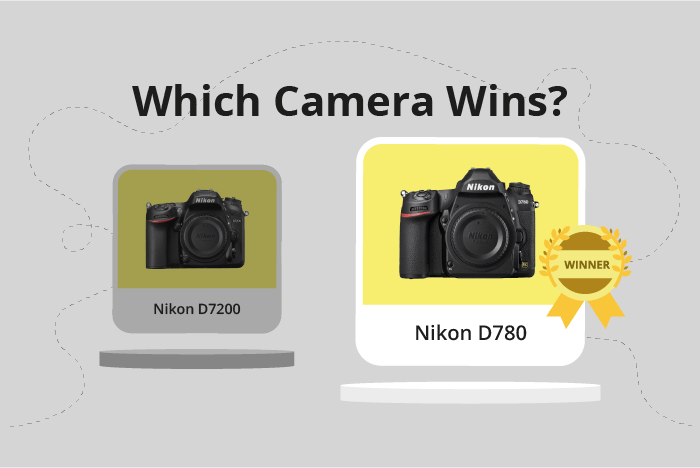Nikon D7200 vs D780 Comparison
Nikon D7200

Nikon D780

The Nikon D780 emerges as the winner with a score of 81, while the Nikon D7200 scores 68. Both cameras are DSLRs and share similarities in size and weight, with the D7200 being slightly lighter at 765g and measuring 136 x 107 x 76mm. The D780, weighing 850g, measures 144 x 116 x 76mm.
The D780 outperforms the D7200 due to its higher score, which reflects its advanced features and improved performance. Despite being the older model, the D7200 has its advantages, such as a lower launch price of $1200 compared to the D780’s $2299.
Taking into account their scores and specifications, the Nikon D780 proves to be the superior camera, while the D7200 offers a more budget-friendly option for those seeking a reliable DSLR.
Nikon D7200 vs D780 Overview and Optics
The Nikon D780 triumphs over the Nikon D7200 in optics with a score of 77/100, while the D7200 scores 71/100. Both cameras share some common specifications, such as 24.2 and 25 megapixels, CMOS sensor type, Nikon lens mount, and the lack of image stabilization.
The Nikon D780 outperforms the D7200 in several aspects. It has a higher shooting speed of 12, compared to the D7200’s shooting speed of 6. The D780 also boasts an Expeed 6 processor, which is superior to the D7200’s Expeed 4 processor. Additionally, the DXOMARK score for the D780’s sensor is 97, significantly higher than the D7200’s score of 87. This difference in DXOMARK score highlights the D780’s improved sensor performance. The D780 also features a full-frame sensor, which provides better image quality and low-light performance than the D7200’s APS-C sensor.
On the other hand, the Nikon D7200 has a Nikon F DX lens mount, which supports a wide range of lenses specifically designed for APS-C cameras. While the D780 has a Nikon F lens mount that can accommodate both full-frame and APS-C lenses, users may find the D7200’s dedicated lens mount advantageous in certain situations.
Taking these factors into account, the Nikon D780 proves to be the superior camera in terms of optics. The increased shooting speed, advanced processor, higher DXOMARK sensor score, and full-frame sensor all contribute to its higher score and overall better performance. The Nikon D7200, however, remains a viable option for those seeking a camera with a dedicated APS-C lens mount.
Nikon D7200 vs D780 Video Performance
The Nikon D780 outperforms the Nikon D7200 in video capabilities, scoring 91/100 compared to the D7200’s 70/100. Both cameras share some common features, such as built-in time-lapse functionality. However, the D780 surpasses the D7200 in several key aspects, making it the superior choice for videographers.
The D780 boasts a 4K maximum video resolution and dimensions of 3840 x 2160, which is significantly higher than the D7200’s Full HD resolution and 1920 x 1080 dimensions. This results in more detailed and crisp video footage with the D780. Additionally, the D780 has a maximum video frame rate of 120fps, double the D7200’s 60fps. This enables the D780 to capture smoother slow-motion footage, providing more creative options for videographers.
While the D7200 falls short in comparison to the D780, it still offers decent video capabilities for those looking for a more budget-friendly option. Its Full HD resolution and 60fps frame rate are sufficient for casual video recording and entry-level videography projects.
Taking all factors into account, the Nikon D780 is the clear winner in terms of video capabilities, offering 4K resolution, larger dimensions, and a higher frame rate. Videographers seeking advanced features and high-quality footage should opt for the D780. However, the Nikon D7200 remains a viable choice for those with a tighter budget or less demanding video requirements.
Nikon D7200 vs D780 Features and Benefits
The Nikon D780 outperforms the Nikon D7200 in features with a score of 87/100 compared to the D7200’s 59/100. Both cameras share some specifications, including a 3.2-inch screen size, the absence of GPS, and the presence of WIFI capabilities.
The D780 excels in several aspects that contribute to its higher score. First, the screen resolution on the D780 is significantly better, with 2,359,000 dots compared to the D7200’s 1,228,800 dots. This provides a clearer and more detailed display when reviewing images and navigating menus. The D780 also has a touchscreen, making it more user-friendly and efficient to operate. Additionally, the D780 has a flip screen, enabling photographers to capture images from various angles with ease. Lastly, the D780 includes Bluetooth connectivity, allowing for seamless file transfer and remote camera control.
While the D7200 trails in overall features, it still holds its ground as a reliable camera. Although it lacks a touchscreen and flip screen, the D7200’s 3.2-inch display remains adequate for most photographers. The absence of Bluetooth connectivity is not a deal-breaker, as WIFI still enables wireless file transfers and remote control.
Taking these factors into account, the Nikon D780 clearly surpasses the Nikon D7200 in terms of features, offering a more advanced and user-friendly experience. The D7200, on the other hand, remains a solid option for those who prioritize simplicity and affordability over cutting-edge features.
Nikon D7200 vs D780 Storage and Battery
The Nikon D780 outperforms the Nikon D7200 in storage and battery with a score of 97/100 compared to the D7200’s 79/100. Both cameras share two memory card slots and accept SD, SDHC, and SDXC cards. However, the D780 is UHS-II compatible, allowing for faster data transfer.
The D780’s battery life is significantly better, providing 2260 shots per charge, while the D7200 offers 1110 shots. Additionally, the D780 uses the EN-EL15b battery, which has a higher capacity than the D7200’s EN-EL15 battery.
The D7200 does not have any advantages in storage and battery compared to the D780. The D780’s longer battery life and USB charging capability make it a more reliable and convenient option for photographers. Its compatibility with UHS-II memory cards also ensures faster performance.
Alternatives to the Nikon D7200 and D780
Are you still undecided about which camera is right for you? Have a look at these popular comparisons that feature the Nikon D7200 or the Nikon D780:

